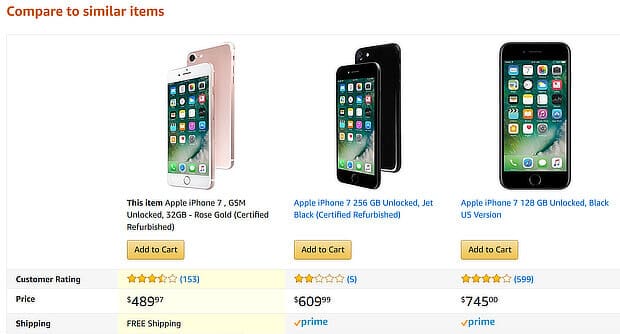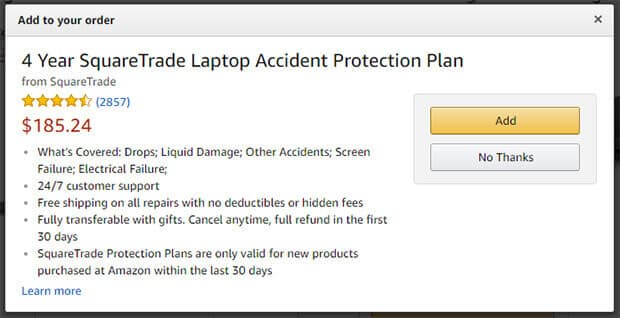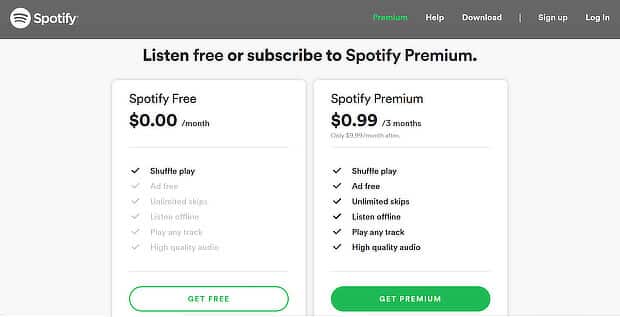5 Easy Ways to Get More Upsales
by Aden Andrus • December 16, 2019
Upsales are one of the easiest ways to increase your average order value and overall profitability. After all, who’s easier to sell to? Someone who is already about to buy? (and/or an existing customer). Or someone who’s still trying to decide whether or not they want to buy?
The fact of the matter is, it’s a lot easier to convince an existing customer to come back and purchase something or to upsell someone who is ready to buy on buying something else, too, than it is to get a potential customer to actually take action. That’s why upsales are so important to businesses.
In fact, according to Marketing Metrics, “The probability of selling to a new prospect is 5-20%. The probability of selling to an existing customer is 60-70%.”
And, if you can recommend the right upsales on your website, those recommendations can drive 10-30% of your revenue. Easier, more affordable and a huge growth opportunity? That’s pretty hard to beat.
So, if you’re looking for ways to increase average order value, total revenue and/or customer lifetime value, figuring out how to get more upsales should be one of the first things you look into.
In this article, we’re going to talk about how upselling works and share 9 different ideas you can use to increase your upsales and make more money from your best customers. Sound good? Let’s get started.
Upselling vs Cross-Selling
When many people think about upsales, what comes to mind is actually cross-sells. Cross-selling is when you suggest something else that a person may want to buy in addition to what they’re already thinking about. For example, if someone is thinking about buying a new phone, you might try to get them to buy a screen protector at the same time.
In contrast, upselling is when you get someone to buy a more expensive version of whatever they’re currently thinking about. So, if you were upselling a phone, you’d try to get someone to upgrade from a 32 GB phone to a 64 GB or 128 GB phone. Amazon uses this sort of approach all the time on their website:

Both cross-selling and upselling are great ways to increase your average order value and revenue per customer, but upselling is particularly great because it helps you get your customers to buy the products or services that make you the most money.
5 Easy Ways to Get More Upsales
So, how exactly do you get more upsales? There are a lot of different tactics you can try, but here are 9 tips to consider as you evaluate your upsale strategy.
1. Try Different Types of Upsales
There are a lot of different ways to approach upsales and different types of upsales appeal to different audiences and markets. Here are some ideas to get you started:
Version Upgrades
The classic upsale, the goal of version upgrades is to get people to buy a better version of whatever you’re offering. Better, faster, more features, nicer looking…whatever the perk to upgrading is, that’s your upsale.
Protection Plans
Protection plans are basically an insurance upsale. Most of the time, you’ll never actually have to cash out, but they give your customers peace of mind that if something goes wrong, they’re covered.

Protection upsales don’t have to be plans, though. For certain kinds of products, you can also cross-sell other protective items, like screen covers or cases for phones. These kinds of protection cross-sells work on the same principle as the protection plan upsale, so they can be a great way to get a little extra out of your big-ticket sales.
Customization
Whether it’s emblazoning a logo on a flat-brimmed hat, printing a photo on a mouse pad or picking out a color scheme for a new car, customization is an easy upsale that most people value. Most people want the same things as everyone else…they just don’t want to feel like they’re getting the exact same things as everyone else.
Extended Service Periods
Extended service periods are upsales where customers can get discounted pricing by signing up for a longer period of time upfront. They put more money in your pocket today and reduce churn, so they’re a win-win for you and your customers.
This sort of upsale works particularly well for service, SaaS and subscription box types of businesses, but it can be adapted to other kinds of businesses as well.
2. Upsell Wherever You Can
As any good salesperson knows, you should upsell whenever and wherever you can—within reason. After all, you never know which customers will respond well to a certain upsale.
The only time you can guarantee that someone won’t respond to your upsale is if you never offer it in the first place.
With that in mind, there are a lot of places on your website where you can promote upsales. Here are just a few examples:
- Product pages. If you’ve got multiple versions of a product, why not compare and contrast them on your product pages?
- Adds to cart. Whether it’s on your checkout page or a pop-up that appears after someone adds something to their cart, adding something to their cart is a clear sign of interest, so it’s a great time to upsell.
- Milestones. When your customers reach certain milestones, like using your service for a certain amount of time or accomplishing specific tasks, it’s a great opportunity to try and upsell them on a better version of your product or service.
The important thing is to identify key decision-making points in your customer journey where your customers are trying to decide what to buy. If you can find those points and make a compelling upsell, you’ll get a lot more out of your customers.
3. Focus on Providing Value
While there’s a temptation to upsell anywhere and everywhere you can, you do have to be careful with upsales. Push too hard, and you can actually push people who would otherwise buy away.
The key to balancing the two is to focus on providing value. Going back to our phone example, if someone’s thinking about buying a certain type of phone, giving them more information about their options is helpful. Discussing promotions on a better—but more expensive—phones can be insightful.
Trying to force them to buy a more expensive phone, however, is just frustrating.
There are a variety of ways to upsell without upsetting your customers. You can incorporate your upsale into information about your product, so that only customers who are seriously considering their options will see it (because, after all, it’s useful information for them).
Alternatively, you can try to upsell when someone is trying to make a purchase. This approach is a little more risky, but as long as your customers feel like you’re trying to help them—perhaps by giving them information they lack—not making a last-ditch attempt to get them to buy something they already decided they didn’t want, it can work.
Finally, you want to make sure that your upsales make sense. Irrelevant upsales simply don’t work. If someone’s trying to buy a cell phone, it would be stupid to try and upsell them on buying laptop instead.
Upsells really only work when people feel like you’re upselling in an effort to help. If your upsale is irrelevant, ill-timed or too in-your-face, it’ll do more harm than good.
4. Focus on the Benefits to the Customer
Why do so many customers hate salespeople? Because most salespeople are focused on themselves, not their customers…and their customers can tell.
Along the same lines, if an upsale feels like it benefits the business a lot more than it benefits the customer, it won’t be very convincing. Good upsales make sense to your customers because they align with your customers’ priorities, needs and interests.
The key to this is using the right language. If you can create a fear of missing out or help potential customers envision themselves enjoying the benefits of their upgraded purchase, you have a good chance of convincing them to buy.
As a quick example, check out how Spotify upsells their paid plans by highlighting what you miss out on with their free plan:

By combining a discount with an obviously better set of features, Spotify makes it easy to justify investing in a premium plan. Will everyone take the upsale? No, but for anyone who values the features of the premium plan, it’ll be hard to resist.
5. Offer Free Shipping
These days, some sort of free shipping offer has almost become an expectation for customers. However, that doesn’t mean that you have to offer free shipping on everything.
With about 90% of customers reporting that free shipping incentivizes them to shop more online, attaching free shipping to higher-value products or bundles can be a great way to get people to spend more.
No one likes spending money on shipping, so people are often willing to spend a little more just to avoid paying for shipping. Establishing minimums for free shipping can be a great way to get people to add extra products to their cart or buy a more expensive version of a product.
By reminding people of how much more they have to spend to qualify for free shipping, you can use this tactic to upsell people into buying more than they otherwise would…while still feeling good about it!
Conclusion
Upsales are one of the most effective ways to increase average order value and overall profitability. In fact, they’re such a great way to get more out of your customers that they should be a fundamental part of most businesses’ marketing strategies.
Fortunately, there are a lot of easy ways to work upsales into your website. The key is understanding your audience, what they value and how to position your upsales in terms of those values. Once you’ve figured that out, it’s simply a matter of implementing your upsales in the right places and at the right times.
By the way, if you’d like some help figuring out how to better incorporate upsales into your website, let us know here or in the comments. We’d love to help you make the most of your site.
How do you approach upsales? What mistakes have you seen on other sites? What are some of the best strategies you’ve seen? Leave your thoughts in the comments below.





